NYC’s Forgotten ‘War on Christmas Trees’
Discover how an obscure holiday crackdown affects festive street vendors today!


New York City is chock full of superlatives. “Best” pizza and tallest building (in the United States) are just some of the superlatives that immediately come to mind. But there are tons of quirky and surprising ones too like the smallest park, the shortest-lived building, the narrowest shop, and even the tiniest subway door. Here, we’ve compiled a few of our favorite and most surprising New York City superlatives. A list like this could go on forever, so let us know what quirky superlatives you would award! Leave a comment or reach out on social media by tagging @UntappedNY!
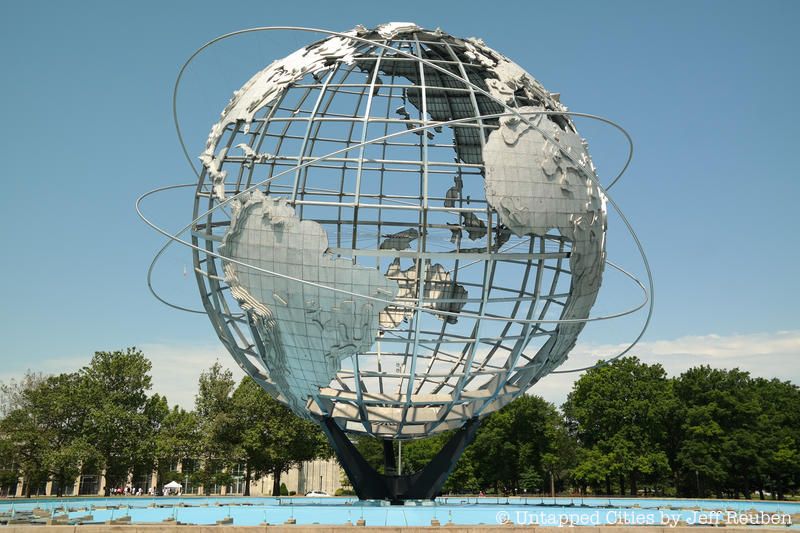
The Unisphere in Flushing Meadows-Corona Park is the largest representation of Earth not only in New York City but on the entire planet Earth! Many New York superlatives can apply to larger regions outside the City. For example, our largest cathedral, St. John the Divine, is one of the largest in the world, and our tallest building, One World Trade, is the tallest in the U.S.
The Unisphere was designed by landscape architect Gilmore D. Clarke as a centerpiece for the 1964 World’s Fair. The stainless steel structure weighs 350 tons and has a 120-foot diameter. Capital cities of the world are marked by lights on the stainless steel structure and mountain ranges are shown in relief. Circling the globe are three orbital rings that represent the path of early satellites.

New York City cocktails in general are infamously expensive, but this one is really over the top. In order to imbibe New York City’s most expensive cocktail, the Algonquin Hotel’s $10,000 martini, you need to order it 72 hours in advance. It also requires a visit to The Algonquin Hotel’s in-house jeweler, Bader & Garrin. At the jeweler, you’ll pick out a diamond, the garnish that makes this martini much pricier than the rest. Finally, days later, you can saddle up to the bar at the hotel’s Blue Bar, and enjoy!
Also known as a “Martini on the Rock,” the wallet-busting cocktail was created to generate buzz when the hotel reopened in 2005 after a $3 million renovation. It was the brainchild of Carla Caccavale from the Quinn Agency and Anthony Melchiorri the hotel’s general manager. If you’re not looking to break the bank, the Blue Bar has many other more budget-friendly options!

In 1932, Robert Moses had a replica of Mount Vernon built in Prospect Park to mark the 200th anniversary of George Washington’s birth. The building, constructed by Sears, Roebuck & Company (who also delivered another replica to the Exposition Coloniales Internationale in Paris in 1931) and designed by architect Charles K. Bryant, lasted a mere two years before being torn down. The house was located at the base of Lookout Hill on the Peninsula of the Lake.
Before this, the original Grand Central (not a terminal then, just a station) was torn down less than three years before it had been completed in 1900. Find out how long New York City’s other shortest-lived buildings, including the lost Crystal Palace, Folk Art Museum, and another Grand Central, were able to hold out.
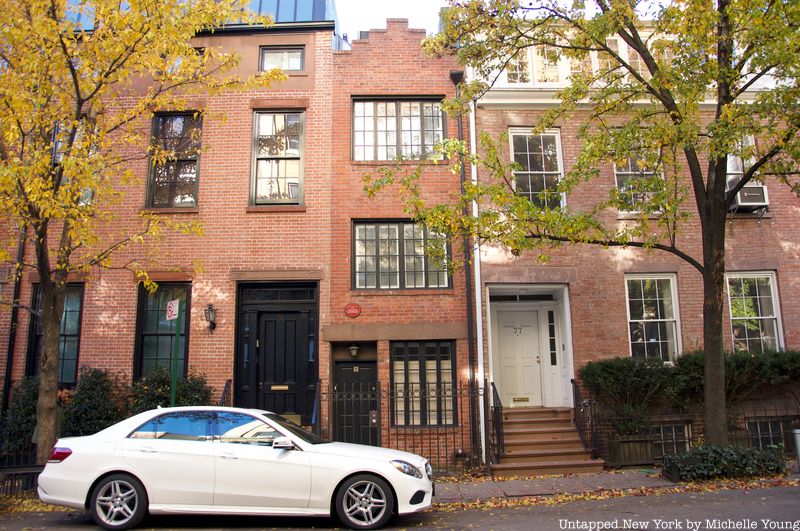
Located in Greenwich Village, 75 1/2 Bedford Street is just 9.5 feet wide and 30 feet deep. It has the distinction of being the narrowest building in the City. An illustrious list of residents has called 75 1/2 Bedford home including Cary Grant, John Barrymore, and William Steig. The house is most commonly associated with the poet Edna St Vincent Millay, who lived there in the 1920s with her husband Eugen Jan Boissevain.
The 1873 house sold for $2.175 million in 2010 and in August 2013 it sold again for $3.25 million. It was most recently listed for sale in 2021 for over $4 million. See the top 5 narrowest buildings in New York City here.

The Alley Pond GIant in Alley Pond Park, between Douglaston and Bayside, Queens, is both the oldest and tallest tree in New York City. The Tulip Tree reaches nearly 134 feet into the air and is estimated to be at least 350 years old, according to NYC Parks.
Tulip Trees can live for 600 years, so the Alley Pond giant might still have a few centuries left. They can also grow over 150 feet tall. The next tallest Tulip tree in the city can be found in Clove Lakes, Staten Island. It’s nearly 15 feet shorter than its Queens cousin.
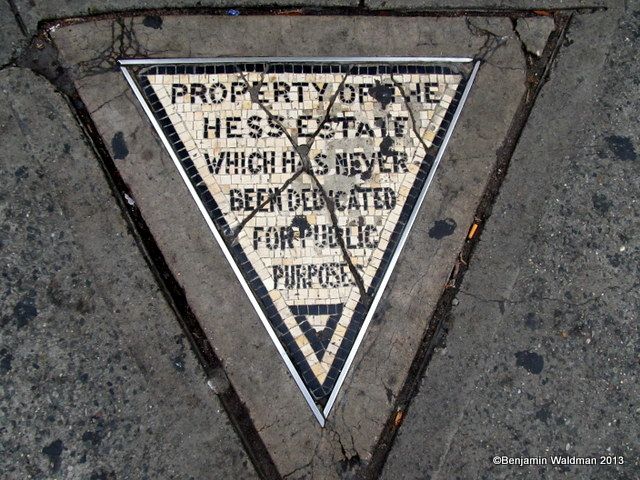
This tiny triangular plot at the corner of Christopher Street and 7th Avenue in Greenwich Village represents one man’s final protest against eminent domain. It’s now marked by a mosaic in front of Village Cigars which reads “Property of the Hess Estate Which Has Never Been Dedicated for Public Purposes.” In total, the land in question measures 500 square inches.
As the city was expanding the IRT subway line and extending 7th Avenue, it took more than 300 properties by eminent domain. For some reason, this little triangular plot belonging to David Hess remained in his possession, left over from the plot his apartment building, The Voorhis, once sat. The city asked him to “donate” the plot of the land for the sidewalk but he refused, taking the issue to court. It remained the smallest piece of private property until 1938, when the David Hess estate sold it to Village Cigars for $1,000.
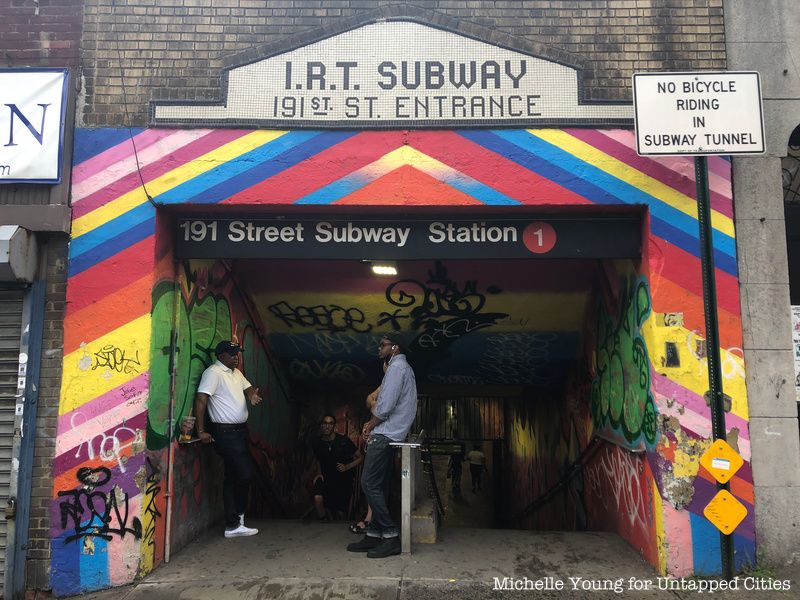
In Washington Heights, the 191st Street stop along the 1 line is considered the deepest at 180 feet below street level, according to the MTA. This is one of the stations that still have full-time elevator operators since the elevators serve as the main access to the platform. These elevators also have a greater tendency to break down, says The New York Times (yikes). See more on the deepest and highest subway stations in New York City.
Ride through the oldest stations, uncover hidden art, and more!

“Oldest” is one of the most written-about superlatives here at Untapped New York. We’ve compiled lists of the oldest houses in every borough. The oldest building in all of New York City is the Wyckoff Farmhouse at 5816 Clarendon Road, in Canarsie. It dates from circa 1652. Owner Pieter Claesen Wyckoff arrived in New Netherlands in 1637 as an indentured servant to the van Rensselaer family. He went on to become a successful farmer and magistrate.
Over the centuries, additions were made to the house and its land was sold away. On December 24, 1967, it became the first building designated as a New York City landmark. Today, the house is open to the public and is operated under the auspices of the Historic House Trust. Discover the oldest buildings in each of the 5 boroughs of New York City here and more of Brooklyn’s oldest buildings here!
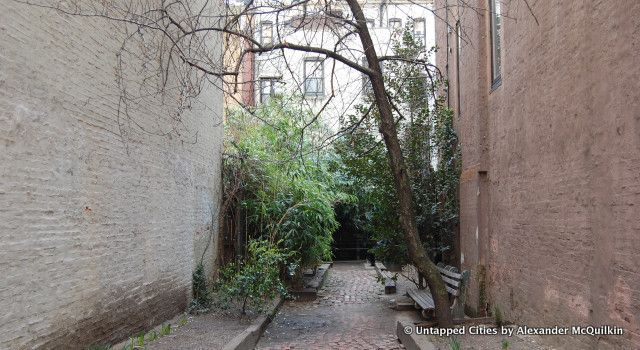
The space at 256 West 71st Street between Amsterdam and West End avenues is often cited as the smallest public space in New York City. There, between two four-story brownstones, like a short, awkward cousin in a family photo, is Septuagesimo Uno. Calling Septuagesimo Uno a “park” is generous. In fact, the parks department actually calls it a “triangle/plaza.” But Septuagesimo Uno is more like a forgotten dead-end alley that has been reclaimed by Mother Nature. It is a world away from the grand public gathering places (Union Square, Bryant Park, Grand Army Plaza) that we tend to associate with New York City parks. At two-fifths of an acre in size, Septuagesimo Uno could fit into Central Park more than 21,000 times.
But, there are in fact six other parks smaller than Septuagesimo Uno, the smallest being too small to even walk into. Check out McNally Plaza and the other smallest parks of Manhattan here.
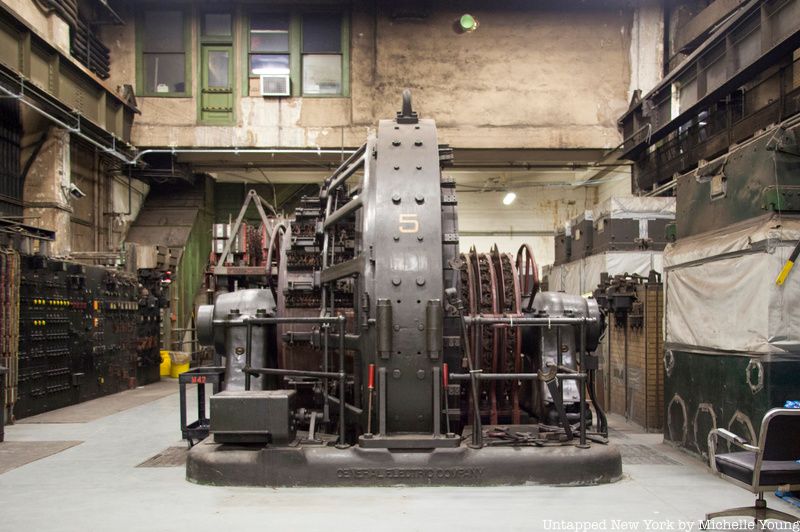
Grand Central Terminal has the largest basement of any building in New York City. The basement covers 49 acres, from 42nd to 97th Street. The entire City Hall building could fit into its depth with a comfortable margin of room to spare. Today, the MTA is about to complete an ambitious project of bringing Long Island Rail Road trains into the terminal via the East Side Access Project, making Grand Central even larger and deeper.
The East Side Access tunnels will be the deepest train tunnels on earth, at 90 feet below the Metro North tracks and over 150 feet below the street. It will take 10 minutes to reach these tunnels by escalator, at their deepest point. Another secret of Grand Central’s basement? The power station that doesn’t appear on any maps or blueprints!
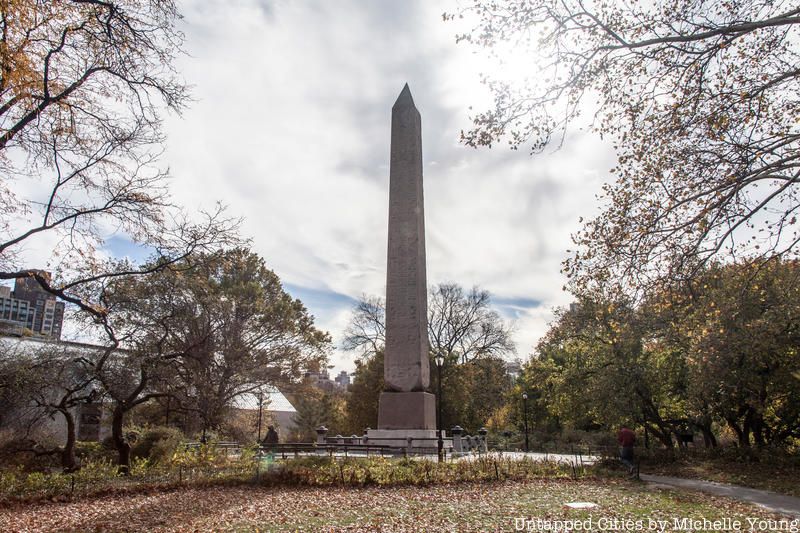
How Cleopatra’s Needle made it to Central Park is an epic tale of engineering brilliance, Yankee ingenuity, clever diplomacy, and sheer persistence. Constructed by order of Egyptian Pharaoh Thutmose III in 1443 BC for his jubilee, it was moved through the idea of US naval officer Henry Honeychurch Gorringe from Alexandria to New York City in 1880 with assistance from Henry Hurlbert owner of the New York World newspaper, William Henry Vanderbilt, Henry Stebbins, the city’s Commissioner of Parks and Elbert Farman, American consul-general in Egypt.
Moving the 200-ton obelisk and 50-ton base involved purchasing a steamship, excavating the obelisk, and crossing the Atlantic. It took 16 weeks to move the obelisk from 96th Street to Greywacke Knoll in Central Park, taking 19 days, night and day just to cross the park on the 86th St Transverse during bitter winter weather. The second oldest man-made item is the Column of Jerash, an ancient Roman column that dates to 120 A.D.
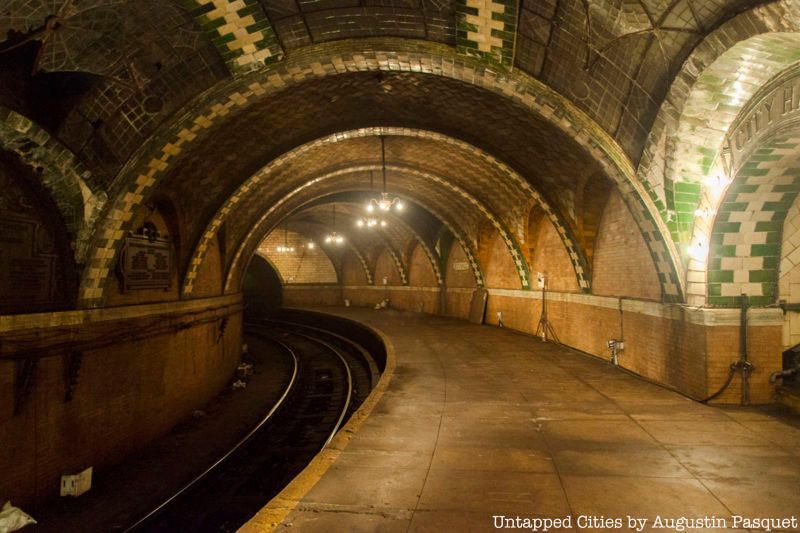
The IRT subway line was the first to open in October 1904, and went from City Hall to Grand Central Terminal, cut across 42nd Street to Times Square, and went on north to 145th Street. Though the IRT subway stations all opened on the same day, the most famous is the decommissioned City Hall subway station.
City Hall Station was built as the “crown jewel” of the new New York City subway line. Though it’s been out of service for over 75 years, you can still catch a glimpse of it today. Trains still travel through the station the 6 line in order to turn around.
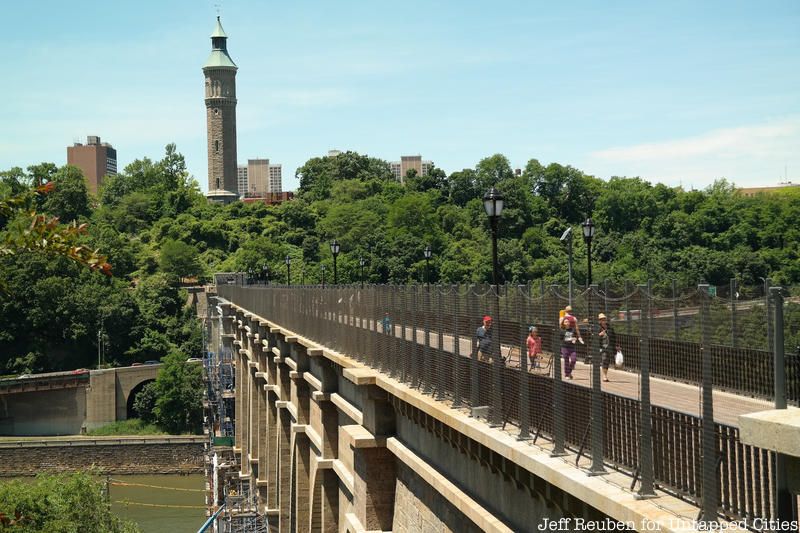
Crossing the Harlem River, High Bridge is the oldest surviving bridge in New York City. Completed in 1848, it connects the Bronx to Manhattan. Built in the style of a Roman aqueduct, it did indeed carry water into New York City through the Croton Aqueduct system until 1917.
When the masonry arches were determined to be a hazard to shipping by the Army Corps of Engineers, local organizations fought against the full demolition of the bridge. Today, the central span is reinforced with steel from a 1927 alteration. The span was closed to the public for over forty years but re-opened to pedestrians in the summer of 2015.
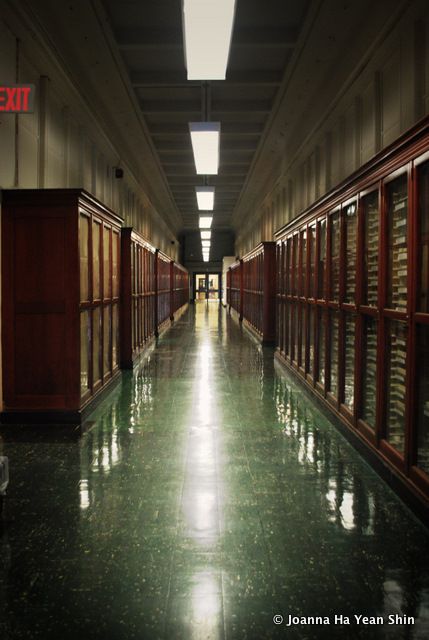
Some superlatives can be contentious or difficult to prove. Here, we put forth the case for this stretch of building inside the American Museum of Natural History, which we have been told is the longest hallway in New York City. The length of the hallway stretches from Columbus Avenue all the way to Central Park West.
Untapped New York got this photograph on a visit behind-the-scenes tour of the art studios where all of the dinosaurs, animals, and space recreations come to life. It is a backstage area of the museum that is not open to the public.
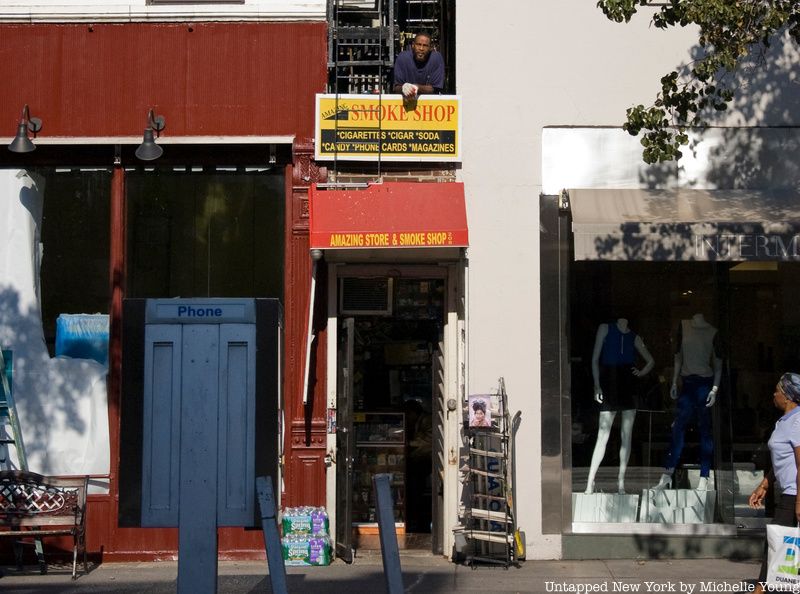
When you have a city like New York where space is at a premium, there are many opportunities for interesting size superlatives. On the Upper West Side, one of the curious developments in the urban fabric of Columbus Avenue are the narrow shops that exist between buildings. The Smoke Shop at 208 Columbus Avenue is one of the narrowest in the city at 46″ including the door frame, leaving 36″ of walkable space. This isn’t a one-off occurrence. As of March 2025, Google says the business is temporarily closed, but we have not yet verified whether it's open or closed.
The occupation of these narrow shops between buildings is part of a special zoning plan from the city of New York, which seems to have reinforced and/or extended already existing usages of in-between spaces along this avenue. A shop in the Garment District selling knockoff DVDs is even narrower. It’s 44″ wide including the door frame, with only 22″ of walkable space. If you include the electronic equipment that blocks more than half of the entryway, you’re left with about 10″, all of which is blocked by the fire hydrants outside.
Another shop that claims the title of New York City's smallest store is Dr. Silkman's in SoHo, with 50 square feet of space sandwiched between a coffee shop and an eyeglass store.
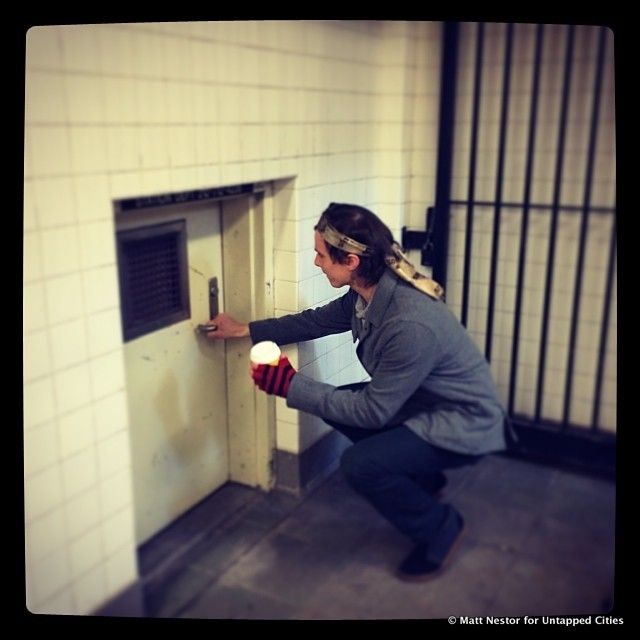
We saved the cutest of the superlatives for last! This adorable door at the 60th Street and Broadway subway entrance to Columbus Circle has been making us smile for a while now. Could it be the smallest door in the NYC subway system? On top of the door is a phone number, which leads to the Rail Control Center offering no further clues. When you start to notice them, there are so many interesting doors and doorways in the subway system, some don’t even lead to anywhere.
What superlatives do you think we should add? Let us know social media @UntappedNY!
Next, check out some more New York City superlatives: The Oldest Building In New York’s 5 Boroughs, 7 Skyscrapers Taller Than the Empire State Building, and 10 Oldest Restaurants in Manhattan
This superlatives list was collectively written by Benjamin Waldman, Alexander McQuilkin, by Tamara Agins, and Michelle Young and updated in November 2022 by Nicole Saraniero
Subscribe to our newsletter